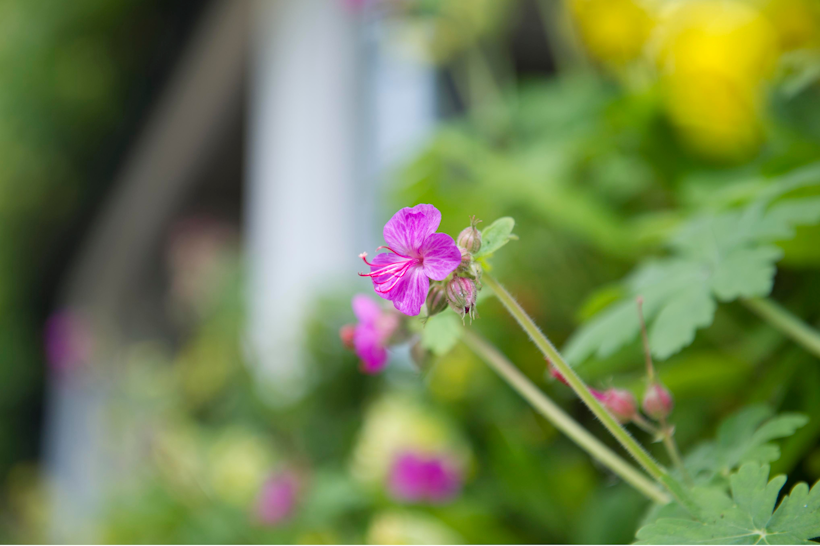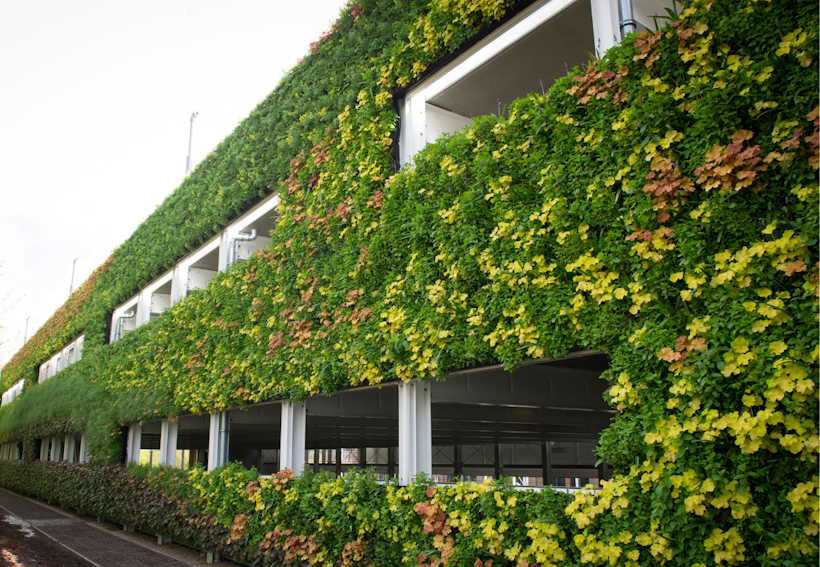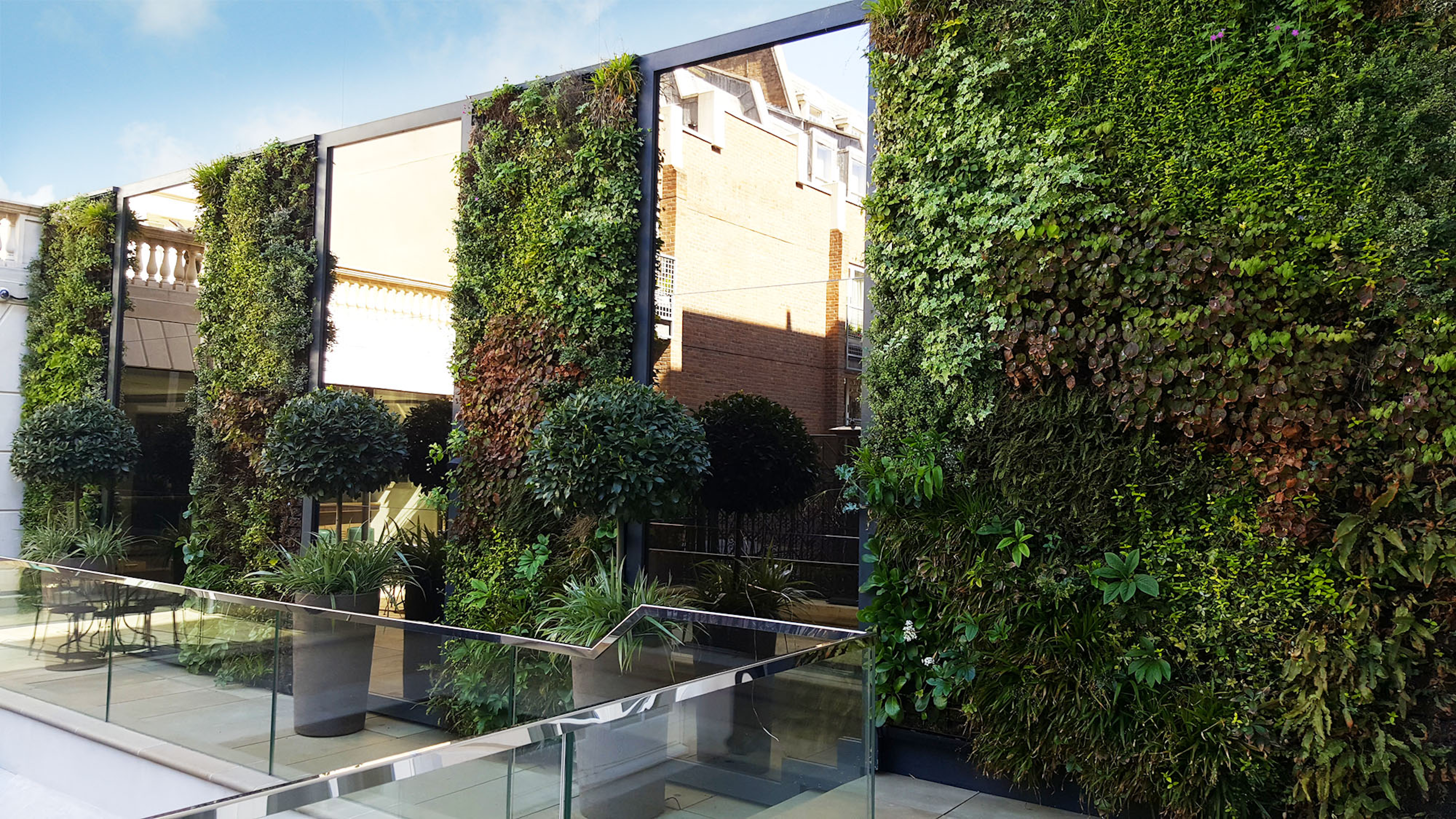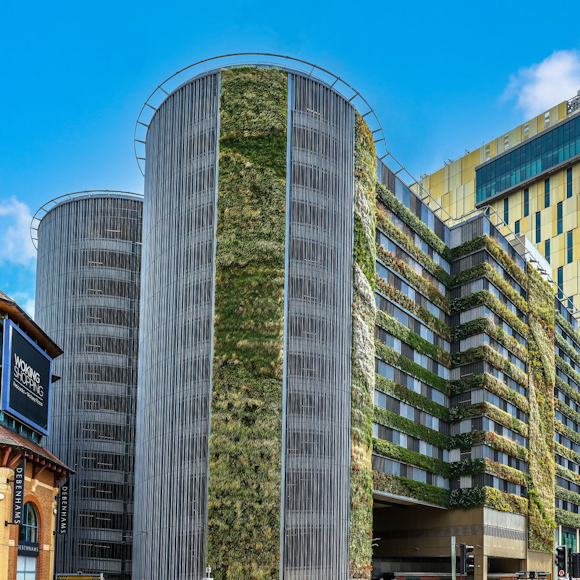A growing trend for living walls is emerging, boosting biodiversity in our towns and cities. Living walls, (or green walls) are vertical gardens that utilize interior or exterior building surfaces that would otherwise be ecologically barren. These modular façades have many benefits including reduced ambient temperature, increased biodiversity, and improved air quality.
If you are an architect, contractor, or developer looking to incorporate a living wall into your next project, you may be wondering which solution will best suit your goals. The lifespan, maintenance, design, and structural integrity of your living wall will depend largely on the substrate base you select. Many living wall systems will use either a natural soil substrate, or a man-made substrate that relies on water for its nutrients, known as hydroponic. But which is best for your living wall project?
Let’s explore in this article.
Firstly, what are hydroponics?
Hydroponics is the practice of growing plants without soil. Instead, plants grow in a hydroponic nutrient solution. This is a liquid which feeds the roots with a mixture of vitamins and minerals.
In hydroponic living wall systems, the nutrient solution is fed into a man-made substrate such as rock wall or a geo-textile fabric in which the plants grow, via the irrigation system.
Soil vs Hydroponics for living walls: comparison
Deciding between a hydroponic or soil-based living wall system can be tricky as both types of vertical planting systems have their individual benefits. To guide you, we have put together a helpful comparison:
1. Irrigation
Hydroponic Living Wall System
Large scale irrigation on a hydroponic living wall needs to maintain optimal temperatures and the right PH balance in order to maintain the plants’ health.
Soil Living Wall System
Soil naturally retains water which means that the regularity of the irrigation can be less.
Our modular Viritopia Living Wall Systems is installed with drainage and irrigation to keep the wall soil and plants in optimum health. We can also work with you to design a system that uses rainwater for natural irrigation.
2. Design freedom
Hydroponic Living Wall System
As the plants are not growing in their natural growing media, plant selection is restricted and spring bulbs and other plant types that provide added biodiversity cannot be used.
Soil Living Wall System
As the plants are growing in their natural growing medium, soil based living walls allow for greater design scope and are able to be designed for specific purposes, for example, air purification or biodiversity.
Planting range for soil based living walls can include spring bulbs like daffodils/bluebells/crocuses, shrubby plants, herbs, perennials, grasses, and wildflowers.

3. Environmental benefits
Hydroponic Living Wall System
Hydroponic living walls improve the air quality through a process called photosynthesis in which plants absorb CO2 and convert it into oxygen.
Soil Living Wall System
Soil living walls also improve air quality, but in addition to this, provide many other environmental benefits. Using a natural substrate means we have greater flexibility in plant selection, allowing for native species, pollinator planting and sources of nectar.
Designed with certain plants, your living wall could become an important food source for insects or provide the first meal of the year for a bee.
But the other half of the environmental gain lies in the soil itself. Providing a habitat for solitary bees (which make their homes in soil rather than hives!) and burrowing insects, encouraging natural colonisation; soil holds huge benefits for biodiversity.
As Gary Grant (Ecologist and Chartered Environmentalist) states:
“Soil is more than just a medium for plants to grow in. Soil is an ecosystem in itself. Soil brings biodiversity, it gives us a buffer in term of water storage. If you’re concerned about biodiversity, then you really do need to start looking at systems with soil.”
4. Disease risks
Hydroponic Living Wall System
Hydroponic systems expose the roots of your plants, opening them up to greater risk of disease. The re-circulation of water can also cause algae and bacteria to grow, which can lead to root rot.
Soil Living Wall System
Soil based green wall systems are less risky, because your plants’ roots are protected inside their cells, and the plants are growing in their natural growing medium.
The roots are protected inside the module cells, and the plants are growing in the way nature intended, which means greater resilience.
5. General maintenance
Hydroponic Living Wall System
Hydroponic systems require constant monitoring and maintenance, including cleaning parts and carefully balancing nutrient mixes. Depending on the size of your living wall, it may take a team of professionals to keep up with the necessary maintenance of hydroponics.
Soil Living Wall System
As soil is a natural eco-system, it requires minimal maintenance. Maintenance visits take place typically monthly, but can be fortnightly, depending on your requirements. These include a visual inspection, adjusting the irrigation levels if necessary and ensuring the soil and plants are in full health.
6.Yields
Hydroponic Living Wall System
Hydroponic systems offer you fast results. Hydroponic systems are especially well suited to large-scale living walls with the skills and resources to keep up with the necessary maintenance.
Soil Living Wall System
Soil based systems have a gradual growth rate.
At Viritopia, our soil-based living wall system is pre-planted at our nursery until mature, before being integrated on-site. This allows instant impact from the day that installation is completed.

7. Lifespan
Hydroponic Living Wall System
With the right care, hydroponic living walls can last for years. However, plants in hydroponics are at high risk of disease which can significantly reduce their lifespan.
Hydroponics require constant application of nutrient solution through the lifespan of the wall.
Soil Living Wall System
Designed to allow root migration, soil substrate plants can grow healthily with a long lifespan.
As the central section in our living wall module is separate from the outer mould, the plant roots are able to grow and migrate from cell-to-cell. This is important for the health of the plants as it means they do not become pot-bound or root-locked. As new roots form, old roots die which creates a natural composting process, resulting in limited nutrient requirements.
Living wall systems from Viritopia
At Viritopia, we believe that nature’s way is best. Our soil-based living wall systems are designed to help you achieve long-term environmental assets.
At Viritopia, we use over 20 years’ experience designing and maintaining green infrastructure, we form detailed analysis on how a scheme is to meet regulation. We aid a faster planning process and provide you with what’s needed to take your project to the next level. Learn more about our living wall consultancy, or contact a member of our team for more information.

